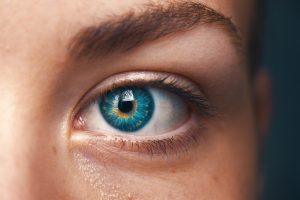Autism (ASD) is a neurodevelopmental disorder that affects around 1% of the population [1], and is characterized by impairments in social communication, as well as repetitive / stereotyped behaviors [2].
While the disorder exists on a spectrum (meaning that the severity of the symptoms can vary greatly), many autistic individuals face various challenges throughout day-to-day life [3].
Attempts to mitigate the negative impacts of the disorder have only had success (albeit, limited) when introduced at an early stage of development [4], which has incentivized finding ways to diagnose ASD at a similarly young age.
The range of abilities that are available to infants is of course limited, in both autistic and typically developing populations, so attempts to diagnose ASD in a non-invasive manner have relied on those skills that are available. This is where eye tracking comes in.
The use of eye tracking
Researchers have investigated how attentional biases in social situations – measured through eye movements – can differ between ASD children and typically-developing children. As individuals with ASD typically have some level of social communication difficulties, the theory is that this is reflected in where they look too.
The ultimate goal of this research is to uncover a pattern of behavior that can be uncovered by eye tracking devices, and can reliably predict the development of ASD later in life.
While such a predictor still awaits discovery, great progress has been made. The text below describes some of the pivotal research into ASD and eye tracking, and the direction that this research is heading.
Social contexts
One of the typical experimental setups for investigating attention in ASD is to use a social setting (which can be completed either on a screen, or in a real-life scenario). This typically features the recording of eye movements using an eye tracker, while the participants view various video recordings.
There have been a variety of stimuli that have been used. Some have used elements of biological motion (shapes that represent a walking person, compared with those same shapes in random positions, for example [5]), and others have used paired visual preference paradigms (social scenes on one side of a screen, and shapes or patterns on the other [6]), and others have simply looked in detail at responses to social scenes.
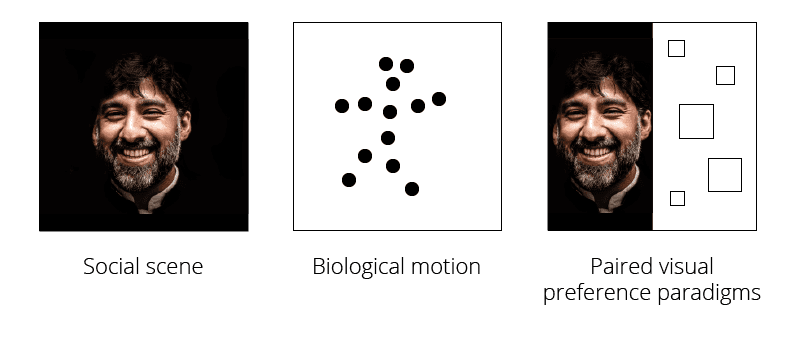
A prototypical example comes from Klin et al in 2002 [7], who showed that adolescents and adults with ASD were less likely to fixate on the eye region of characters shown in a movie. This suggested that central characteristics of ASD could be split into smaller, more quantifiable components, and used to study ASD further.
Similar research with similar results has been repeated many times [8, 9, 10, 11], showing the consistency and robustness of the finding that gaze patterns differ in individuals already diagnosed with ASD.
Klin’s pivotal piece of research spurred further investigations into the viewing behavior of infants, in a hope to identify such robust, and quantifiable, predictors of ASD at an early age as possible.
Early identification
Jones et al
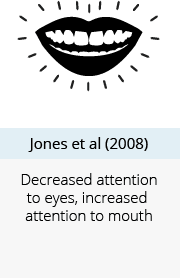
Jones et al [12] used eye tracking to investigate where both typically developing and autistic children (2-year-olds) looked while watching videos of adults engaging in play-like behavior. They found that the autistic children were much less likely to view the eyes (similar to the Klin study), but that they were more likely to view the mouth of the actors.
Hosozawa et al
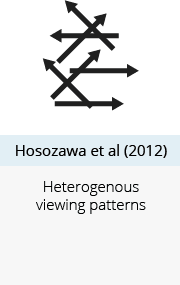
In contrast to this, Hosozawa et al [13] in a similar study didn’t find any reduction in viewing of the eyes, or an increase of looking at the mouth, but instead found a more heterogeneous viewing pattern among the ASD sample. This suggested that the viewing behavior wasn’t specialized, but instead evenly spread around the entire scene.
Young et al
In one of the first studies that attempted to use these findings to determine the potential later development of ASD, Young et al. (in 2009) [14] used eye tracking to investigate the viewing patterns of social scenes in 6-month-old children (that were at either a low or high risk for ASD).
In contrast to the expectations, reduced eye gazes were not associated with the later development of ASD (although the proportion of the sample that went on to develop ASD was too small to state this definitively [15]).
Elsabbagh et al

Adding further complexity to the understanding of early development of attention in ASD, Elsabbagh et al [16] completed a similar study with face orienting. By presenting different visual stimuli (some were images of faces, some were other objects), and recording which gained the most attention, they found that all children – irrespective of later ASD diagnosis – preferentially attended to the faces.
Shic et al
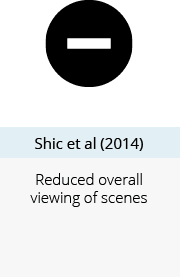
In 2014, Shic et al [8] used a similar approach as Young et al, but with a larger sample, finding that ASD was more likely to develop in 6-month olds who exhibited a reduced overall viewing time of the presented social scenes. Furthermore, they found that when these children viewed faces, they tended to focus on the features of the face.
This has intensified the race to find a reliable biomarker of ASD, by showing that identifiable components can be used to help understanding of the development of ASD.
Future perspectives
While eye tracking of young infants has yielded encouraging results, it is also clear that more work needs to be done to delineate more accurate predictors of later ASD development. This could be helped by introducing other forms of measurement, as combined data sources could help verify each other [17].
This is best exemplified by the JAKE study [18], which uses eye tracking and a variety of other biometric methods to identify early biomarkers of ASD. An EU led study [19] has also embraced similar methods and is currently in initial phases (although is more focussed on developing personalised treatment methods of ASD than early diagnosis).
As these multimodal research studies are still ongoing, we can look forward to a clearer and more complete understanding of ASD, and how treatments can help improve the lives of those affected.
I hope you’ve enjoyed reading about the ways in which eye tracking technology is being used to advance the understanding of ASD. If you’d like to learn more about eye tracking can be used in research, download our free guide below.
Eye Tracking
The Complete Pocket Guide
- 32 pages of comprehensive eye tracking material
- Valuable eye tracking research insights (with examples)
- Learn how to take your research to the next level
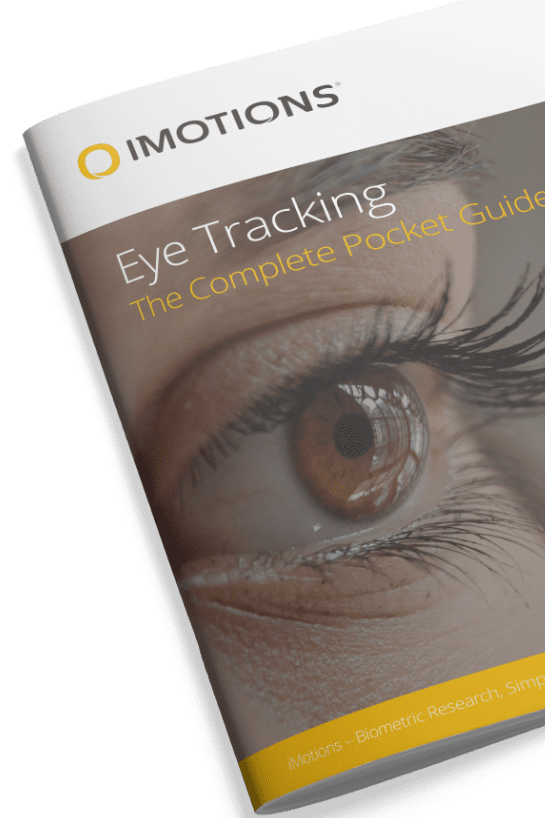
References
[1] NHS Digital, (2009, September 22). Autism Spectrum Disorders in Adults Living in Households Throughout England – 2007, Report from the Adult Psychiatric Morbidity Survey. Retrieved from: https://digital.nhs.uk/catalogue/PUB01131
[2] Bölte, S., and Hallmayer, J. (2011). Autism Spectrum Conditions: FAQs on Autism, Asperger Syndrome, and Atypical Autism Answered by International Experts. Boston, MA, Hogrefe Publishing.
[3] Cage, E., Di Monaco, J., and Newell, V. (2018). Experiences of Autism Acceptance and Mental Health in Autistic Adults. J Autism Dev Disord, 48(2): 473–484.
[4] Dawson G. (2008). Early behavioral intervention, brain plasticity, and the prevention of autism spectrum disorder. Dev Psychopathol, 20(3):775-803.
[5] Klin, A., Lin, D. J., Gorrindo, P., Ramsay, G., and Jones, W. (2009). Two-year-olds with autism orient to nonsocial contingencies rather than biological motion. Nature, May 14; 459(7244): 257–261.
[6] Pierce, K., Conant, D., Hazin, R., Stoner, R., and Desmond, J. (2011). Preference for geometric patterns early in life as a risk factor for autism. Arch Gen Psychiatry, Jan;68(1):101-9.
[7] Klin, A., Jones, W., Schultz, R., Volkmar, F., and Cohen, D. (2002). Visual fixation patterns during viewing of naturalistic social situations as predictors of social competence in individuals with autism. Arch Gen Psychiatry, Sep;59(9):809-16.
[8] Shic, F., Macari, S., and Chawarska, K. (2014). Speech Disturbs Face Scanning in 6-Month Olds who Develop Autism Spectrum Disorder. Biol Psychiatry, Feb 1; 75(3): 10.1016.
[9] Chawarska, K, Macari, S., and Shic, F. (2013). Decreased spontaneous attention to social scenes in 6-month-old infants later diagnosed with ASD. Biol Psychiatry, Aug 1; 74(3): 195–203.
[10] Shic, F., Bradshaw, J., Klin, A., Scassellati, B., and Chawarska, K. (2011). Limited Activity Monitoring in Toddlers with Autism Spectrum Disorder. Brain Res, Mar 22; 1380: 246–254.
[11] Chawarska, K, Macari, S., and Shic, F. (2012). Context modulates attention to social scenes in toddlers with autism. J Child Psychol Psychiatry. Aug; 53(8).
[12] Jones, W., Carr, K., and Klin, A. (2008). Absence of preferential looking to the eyes of approaching adults predicts level of social disability in 2-year-old toddlers with autism spectrum disorder. Arch Gen Psychiatry. 65:946.
[13] Hosozawa, M., Tanaka, K., Shimizu, T., Nakano, T., and Kitazawa, S. (2012). How children with specific language impairment view social situations: an eye tracking study. Pediatrics. 129:E1453–E1460.
[14] Young, G. S., Merin, N., Rogers, S. J., and Ozonoff, S. (2009). Gaze behavior and affect at 6 months: predicting clinical outcomes and language development in typically developing infants and infants at risk for autism. Dev Sci. 12:798–814.
[15] Falck-Ytter, T., Bölte, S., and Gredebäck, G. (2013). Eye tracking in early autism research. Journal of Neurodevelopmental Disorders. 5:28
[16] Elsabbagh, M., Gliga, T., Pickels, A., Hudry, K., Charman, T., Johnson, M., and Team, T. B. (2013). The development of face orienting in infants at-risk for autism. Behav Brain Res. 251:147–154.
[17] Billeci, L., Narzisi, A., Tonacci, A., Sbriscia-Fioretti, B., Serasini, L., Fulceri, F., Apicella, F., Sicca, F., Calderoni, S., & Muratori, F. (2017). An integrated EEG and eye-tracking approach for the study of responding and initiating joint attention in Autism Spectrum Disorders. Scientific Reports. Volume 7, Article number: 13560.
[18] Ness, S. L., Manyakov, N. V., Bangerter, A., Lewin, D., Jagannatha, S., Boice, M., Skalkin, A., Dawson, G., Janvier, Y. M., Goodwin, M. S., Hendren, R., Leventhal, B., Shic, F., Cioccia, W., and Pandina, G. (2017). JAKE® Multimodal Data Capture System: Insights from an Observational Study of Autism Spectrum Disorder. Front Neurosci. Sep 26;11:517.
[19] Loth E, Charman T, Mason L, Tillmann J, Jones EJH, Wooldridge C, Ahmad J, Auyeung B, Brogna C, Ambrosino S, et al. (2017). The EU-AIMS Longitudinal European Autism Project (LEAP): design and methodologies to identify and validate stratification biomarkers for autism spectrum disorders. Mol Autism. 8:24.
[/fusion_builder_column][/fusion_builder_row][/fusion_builder_container]









